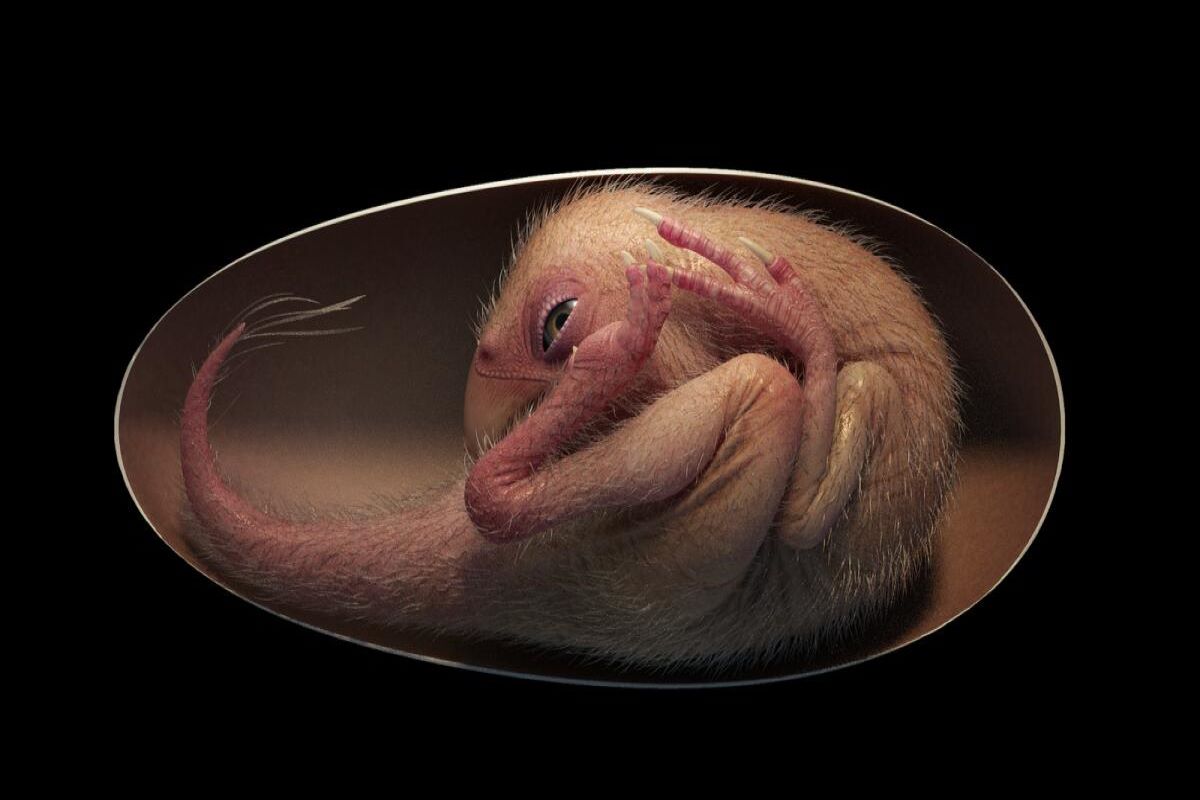It’s been quite a year for science, what with the launch of the James Webb telescope, the Mars landings and a probe practically ‘touching’ the sun. And as we launch ourselves further and further into space, with one goal being the eternal search for extraterrestrial life, we must also not ignore delving deeper into how life evolved on our own planet as here are clues as to what life on other planets may look like.
And on that front, towards the end of this year came the discovery of what is the best-preserved dinosaur embryo that has ever been found. Named Baby Yingliang, this 72-million-year-old fossilised embryo of a dinosaur was found in southern China and, for all intents and purposes, looks just like a baby bird about to hatch; the embryo is in what is called a ‘tucking position’, which is a distinct position taken by pre-hatched birds that helps them break open the eggshell using their beak.
Advertisement
This latest discovery is further confirmation of the long-held theory that the dinosaurs didn’t exactly die out; they just evolved into birds. This gets even more interesting when you realise that the embryo in question is of a theropod dinosaur, an incredibly diverse group of dinosaurs that ranged from the tiny Microraptor to the Tyrannosaurus rex itself.
As far as that iconic dinosaur goes, scientists have been reconsidering how it may actually have looked and the scaly T. rex of Jurassic Park fame has now been revised to add a crest of feathers on its head, back and tail. It’s impossible to be sure that this is what it actually looked like, because feathers are rarely preserved in the fossil record, and none have been found in a T. rex fossil.
However, preserved feathers have been found on fossils of other tyrannosaurus species and their relatives and so a feathery and colourful T. rex is not out of the question. Previously, the only real fossil link between birds and dinosaurs was the Archaeopteryx, which had feathered wings and also the teeth and long bony tail of a dinosaur. Given that it developed these hybrid characteristics in a mere 10 million years (an eyeblink in evolutionary terms) scientists posited that evolution may not be purely gradual, but may also leap forward, effecting large genetic changes in a relatively short period of time.
But as new discoveries are made, we are realising that the evolution of dinosaurs from gigantic reptiles to the innocuous birds of today, may have been a far slower process that involved incremental change over an immense period of time. This, in turn, forces us to rethink how life evolved on this planet, and what direction evolution may take in the future. And that knowledge may prove crucial not just to ensuring the continuation of life on this planet, but also to the search for life on other planets.
But as important as the life of dinosaurs may have been, the manner in which they went ‘extinct’ is also something that should concern us. They were a remarkably successful species, having dominated the earth for an incredible 180 million years and would have likely continued to do so if not for a cosmic fluke in the shape of a planet-killing asteroid.
This massive celestial rock, said to be between 10 and 15 kilometres wide, impacted somewhere off the coast of what is now Mexico with such velocity that it created a crater 150km in diameter. Such was the impact that massive tsunamis swept over the American continents and so much debris was thrown into the air that it created a global nuclear winter that blocked out the sun’s rays. This led to the near eradication of plant life, creating a domino effect that in short order killed off 75 per cent of animal life on earth.
It’s a statistical certainty that at some point this will happen again. After all, Earth is routinely bombarded by space rocks, most of which are too small to do any real damage but every once in a while, as in the Russian region of Tunguska in 1908, potentially deadly meteors and asteroids do indeed burn their way through Earth’s atmosphere. While the Tunguska asteroid luckily hit an uninhabited area, the 12 megaton blast flattened an area of over 2,000 square kilometres and created a shockwave that was felt as far away as Washington, D.C.
Up until now, all Nasa and other space agencies have done is to keep an eye on potential world-ending asteroids heading our way, but being forewarned isn’t the same as being forearmed …until now. In a project that comes straight out of a science fiction movie, Nasa recently launched a satellite with a single mission: to crash into an asteroid to see if the impact can effect a slight change in its trajectory. If successful, this would mean that we are on the way to establishing a line of defence against an asteroid apocalypse. If not, then, well, perhaps some future species will pore over our fossils.
(Dawn/ANN)









